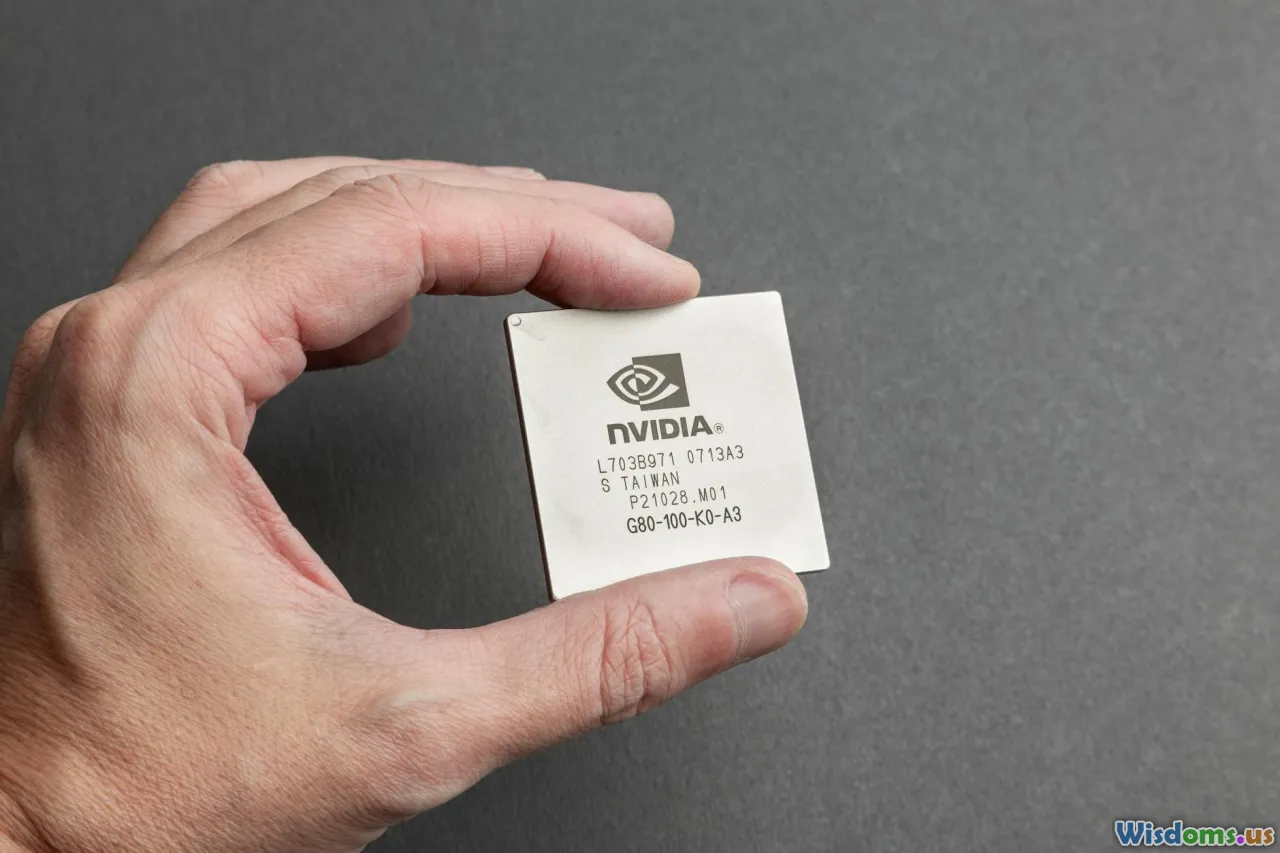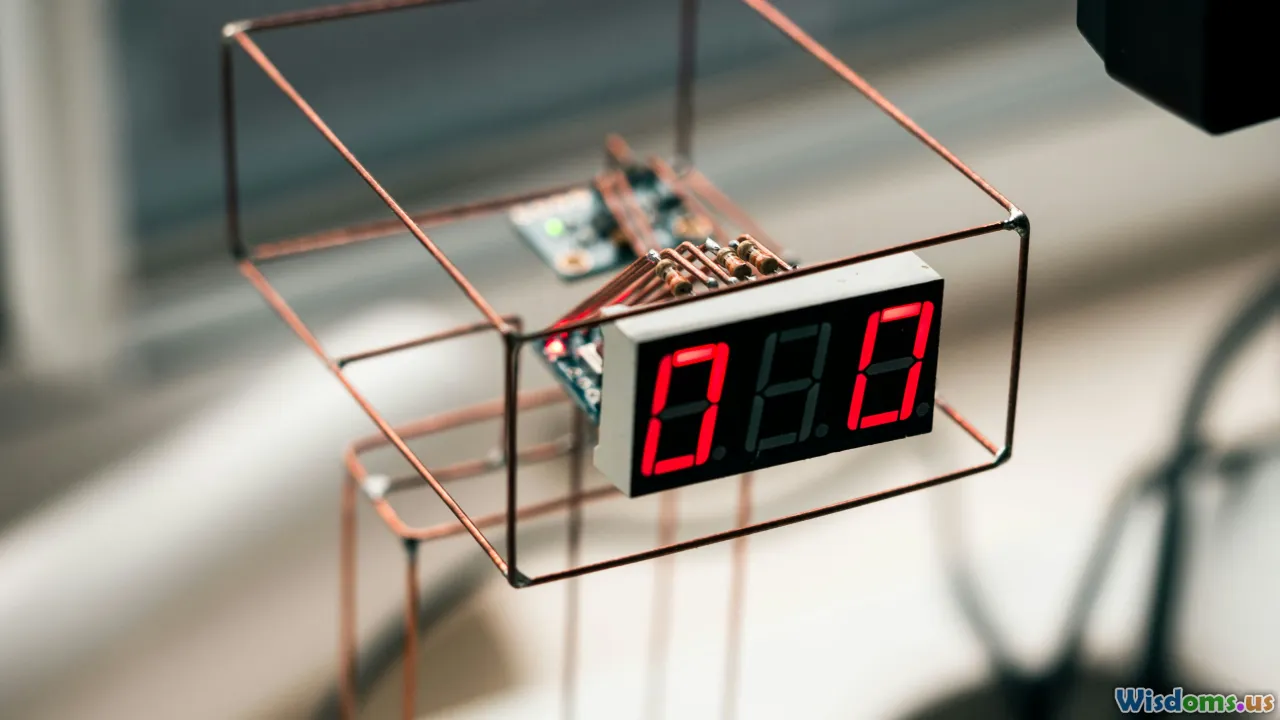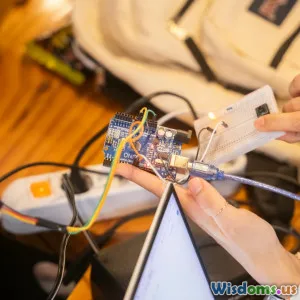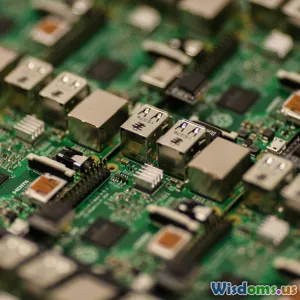
Flash Memory Wear Leveling Techniques for Longevity in IoT Devices
16 min read Explore essential flash memory wear leveling techniques to enhance longevity and reliability of IoT devices. (0 Reviews)
Flash Memory Wear Leveling Techniques for Longevity in IoT Devices
As billions of sensors, controllers, and smart devices flood the world, the engines quietly keeping the data alive are often easy to overlook. The humble flash memory—the backbone of modern IoT devices—faces a daunting challenge: how to survive the intense read/write cycles demanded by always-on, always-connected digital infrastructure. Fortunately, engineers have developed sophisticated strategies called "wear leveling" to prolong the lifespan of flash storage. Today, let's explore how these clever tactics help IoT devices remain robust, reliable, and responsive far into the future.
How Flash Memory Wears Out

Unlike traditional spinning hard disks, flash memory stores bits via electrical charges held within tiny transistor gates. The problem? These cells degrade every time they're programmed, erased, or re-written—a finite material lifespan that's measured in program/erase (P/E) cycles. For example, common NAND flash (SLC, MLC, TLC) might endure anywhere from 1,000 write cycles (at the low end, for TLC) up to 100,000 cycles in more robust SLC types. Once a cell’s lifetime is exceeded, it won’t reliably hold data, risking corruption or outright device failure.
For most consumer workloads—occasional file saving and downloading—this isn’t a problem. But IoT devices recording temperatures in a factory every five seconds, or updating firmware over-the-air, can hammer specific memory sectors with a relentless ferocity. This uneven usage accelerates localized wear, which is where wear leveling steps in.
Static versus Dynamic Wear Leveling: Key Concepts

At its core, wear leveling is about distributing writes as evenly as possible across the entire flash memory space to prevent individual blocks from early burnout. Two principal approaches, static and dynamic wear leveling, define most solutions:
Dynamic wear leveling is the simplest method—it only moves valid (in-use) data when a write or erase is necessary. When new data arrives, the device picks a block with the lowest usage count. This distributes fresh writes fairly but leaves untouched blocks (those with long-lived data) rarely updated and subject to uneven wear if write hot spots persist.
Static wear leveling goes further—also relocating infrequently touched data from older blocks to fresher ones so that no block remains untouched for too long. For instance, if a configuration file never changes, static leveling will periodically copy it to a newer block and free up the older block so the entire memory ages uniformly. This additional copying activity slightly reduces maximum achievable write endurance, but greatly spreads out cell fatigue.
Practical Example: Consider a remote weather station. The logs change every minute, and sensors’ firmware remains largely static. Without static leveling, constant log writing exhausts a single area, leaving firmware blocks pristine; with it, even "idle" regions share the wear burden, extending device lifetime.
Implementing Wear Leveling: Techniques and Algorithms

Wear leveling isn’t just a simple background process—it’s achieved through intricate algorithms, either in hardware (memory controllers) or software (file systems and drivers). Let's analyze the primary techniques found in popular IoT device implementations.
Block Counting
Most algorithms start with a simple philosophy: keep track of how often each block has been erased/programmed, using a counter table (sometimes called an "age map"). When new data needs storing, the controller consults this map and selects the block with the lowest P/E number. More advanced schemes penalize those with more accumulated cycles, further promoting even wear.
Example: A surveillance sensor may write motion records to flash every 30 seconds. Block counting helps distribute these records so that no single sector gets all the writes, greatly multiplying the system’s total lifespan.
Garbage Collection and Data Relocation
Wear leveling often functions hand-in-hand with garbage collection. Old data marked invalid gets cleaned out, making room for new writes. In static wear leveling, garbage collection will also proactively move valid but under-used data, so its host blocks can eventually join the write pool.
This process is especially visible in file systems designed for flash, such as the widely-deployed FAT-like Flash Translation Layer (FTL), YAFFS (Yet Another Flash File System), and JFFS2 (Journaling Flash File System v2). Each offers unique methods for balancing speed, wear, and storage efficiency:
- FTL: Abstracts physical memory, presenting a logical disk to software. All write/erase decisions—including wear leveling—are hidden from upper layers, simplifying development but limiting OS control.
- YAFFS and JFFS2: File systems tailored for NOR/NAND flash in embedded Linux, more directly manage block switching, providing better transparency and flexibility for special-purpose IoT devices.
Address Translation and Indirection Tables
Address translation—mapping logical memory requests to physical addresses—makes wear leveling possible. By decoupling software’s view from reality, these techniques allow for block swaps, relocation, and wear tracking without breaking running applications. Indirection tables track where each file or block truly lives on the chip, so data can be relocated freely behind the scenes.
Actionable Tip: Developers building or choosing firmware should look for well-maintained address translation mechanisms, as implementations vary widely. Poorly designed translators can create hotspots or slow performance.
File System Considerations for IoT Devices

For constrained IoT devices—those with limited RAM, processor power or storage capacity—choosing the right file system is as crucial as the wear leveling algorithm itself. Some important options are:
- LittleFS: An open-source POSIX-like file system purpose-built for microcontrollers. Boasts built-in static wear leveling, low RAM requirements (~2kB), high resilience to power loss, and is ideal for configuration or log data.
- FAT-based FTL solutions: Provide compatibility with consumer firmware, perfect for smart cameras or door sensors needing to download data as flash drives.
- SERIALFlash and SPIFFS: Lightweight and widely supported, offering reasonably effective wear-leveling with minimal overhead. Used in ESP32/ESP8266 environments.
Comparative insights:
| File System | Pros | Cons | Best For |
|---|---|---|---|
| LittleFS | Static wear leveling, compact, robust | Early versions slow with long directories | Config files, event logs |
| SPIFFS | SPI bus, small footprint | No directories, weaker wear leveling | Small logs/images |
| YAFFS2 | Robust, multi-block support | Large memory usage, complex | Linux-based IoT devices |
| FTL | OS transparency | Less flash-specific tweakability | Plug-and-play SD-like |
Insight: The right file system bridges the gap between electronics and application logic. In practice, mixing an FTL approach with static wear leveling delivers excellent performance for event-heavy, write-intensive workloads common across modern monitoring IoT nodes.
Practical Engineering: Parameter Tuning for Longevity

Extending flash endurance is as much an art as it is a science. Even perfectly distributed wear can be undermined by heavy application behavior, excessive logging, or environmental factors. Smart engineers tune a number of system parameters for best results:
Write Buffering and Aggregation
Rather than writing every tiny change directly, buffer events in RAM and flush them as block-sized (typically 4–16 kB) batches. This approach dramatically cuts the write amplification ratio—how many underlying physical writes a single logical write creates.
Example: A smart meter might measure consumption every minute, but only commit hourly summaries to flash, reducing write frequency from 1,440 to just 24 cycles per day.
Reserved Overprovisioning
Overprovisioning—the act of reserving part of flash storage as spare, invisible to the system—gives wear-leveling algorithms breathing room. Manufacturers often ship SD cards/SSD modules with 5–30% overprovisioned space. For custom IoT hardware, engineers can partition NAND such that only a portion is actively used.
Tip: More overprovisioning means longer life, but at the cost of usable space. High-write systems (such as gateways or event loggers) benefit significantly—from a fourfold increase in endurance when jumping from minimal to generous reserve ratios.
Error Correction Codes (ECC) and Redundancy
Pairing wear leveling with ECC helps catch and correct single-bit and multi-bit errors as blocks age. This is vital for safety-critical applications, such as medical monitors or automotive MCUs.
In addition, mission-critical IoT deployments should consider dual-chip setups or regular cold-backup cycles, in case one memory device fails permanently due to uneven wear or manufacturing defect.
Real-World Case Studies: Successes and Cautionary Tales

Looking at industry examples showcases both triumphs and missteps in managing flash longevity.
Industrial Sensors in Oil Rigs: Remote pressure and chemical sensors in oil wells must store five years of hourly logs. Here, implementing static wear leveling alongside robust error correction made it possible for even TLC-grade NAND chips (with lower endurance) to avoid premature failure. By combining a block-age histogram and predictive relocation, the mean time to failure was improved threefold compared to earlier deployments.
Smart City Traffic Cameras: Some early smart cameras would write time-stamped events several times per second to the same storage sector. In less than 18 months, these blocks became unreadable and camera footage was lost—because wear leveling was limited to basic dynamic schemes. Later models adopted hybrid methods (mixing static migration with smarter logs) and moved regularly-updated metadata alongside images, restoring multi-year reliability.
Wear-Leveling Gone Awry: Overly aggressive static wear leveling—especially when implemented in minimal hardware with limited RAM—can backfire, increasing write amplification and slowing performance. A major meter vendor learned this the hard way when customer complaints surfaced about devices "losing settings" after every electrical brownout. The culprit? Firmware updates lacked robust crash-consistent wear leveling.
Lesson: Holistic system design, balancing hardware constraints and application needs, trumps one-size-fits-all algorithms.
Trends and Future Directions

With the expanding diversity of IoT devices, flash memory wear leveling is evolving fast:
- AI-Enhanced Management: Algorithms that use machine learning to predict changing write patterns, dynamically reshuffling wear-leveling priorities.
- 3D NAND and Emerging Technologies: Next-generation flash offers higher density and new endurance challenges, demanding further innovation in wear distribution. For example, 3D NAND introduces "layered" wear hotspots not present in classic 2D arrays.
- Edge Analytics: By performing more real-time data analysis at the sensor node and summarizing results in short entries, the burden on flash can be further minimized. New system architectures promote longevity by design—less data, fewer writes, longer life for every byte.
Pro Insight: Developers creating IoT fleet devices should consider periodical field data dumps and flash health monitoring, allowing firmware to proactively warn users or schedule maintenance long before a critical failure.
Smart strategies to combat flash wear are transforming what’s possible at the edge. With dynamic and static wear leveling, engineers keep our connected world ticking—unobtrusively, silently, and for years longer than naïve storage schemes allow. Careful attention to system topology, file system tuning, and algorithmic balance turns fragile silicon into a resilient platform for tomorrow’s IoT breakthroughs.
Rate the Post
User Reviews
Popular Posts

















